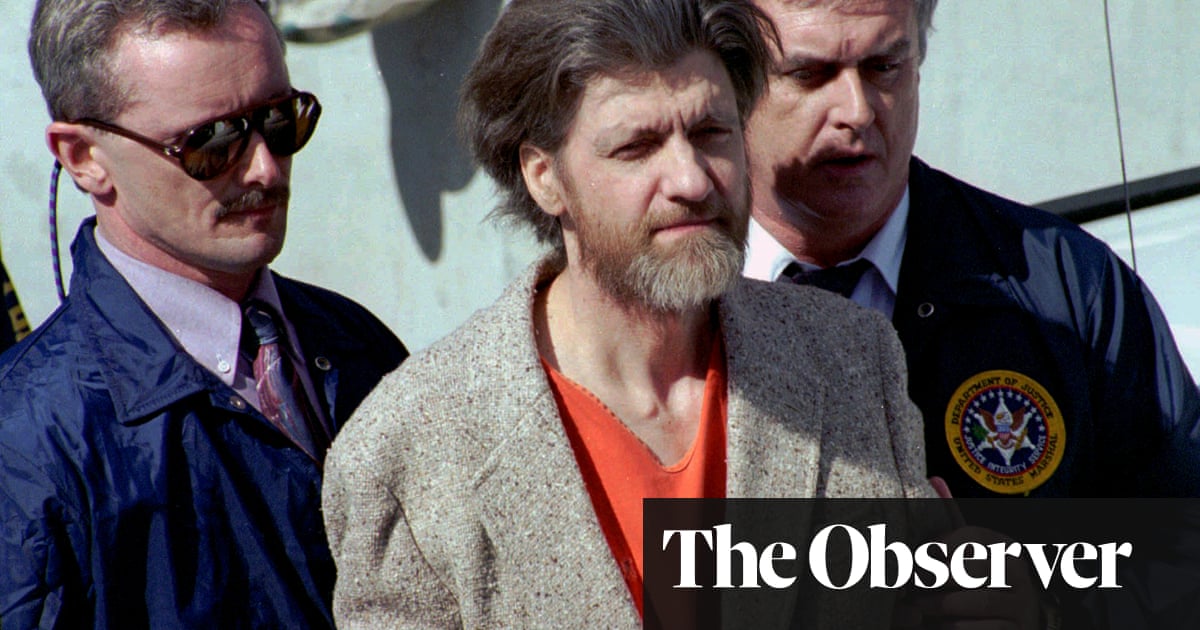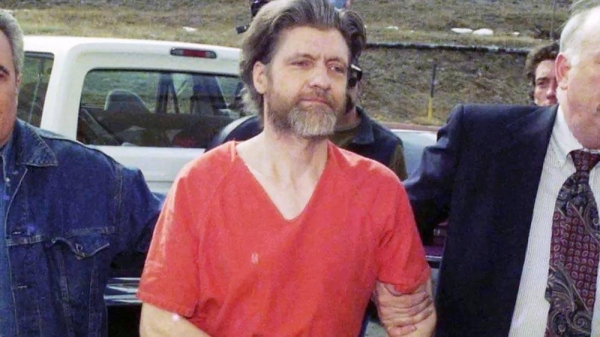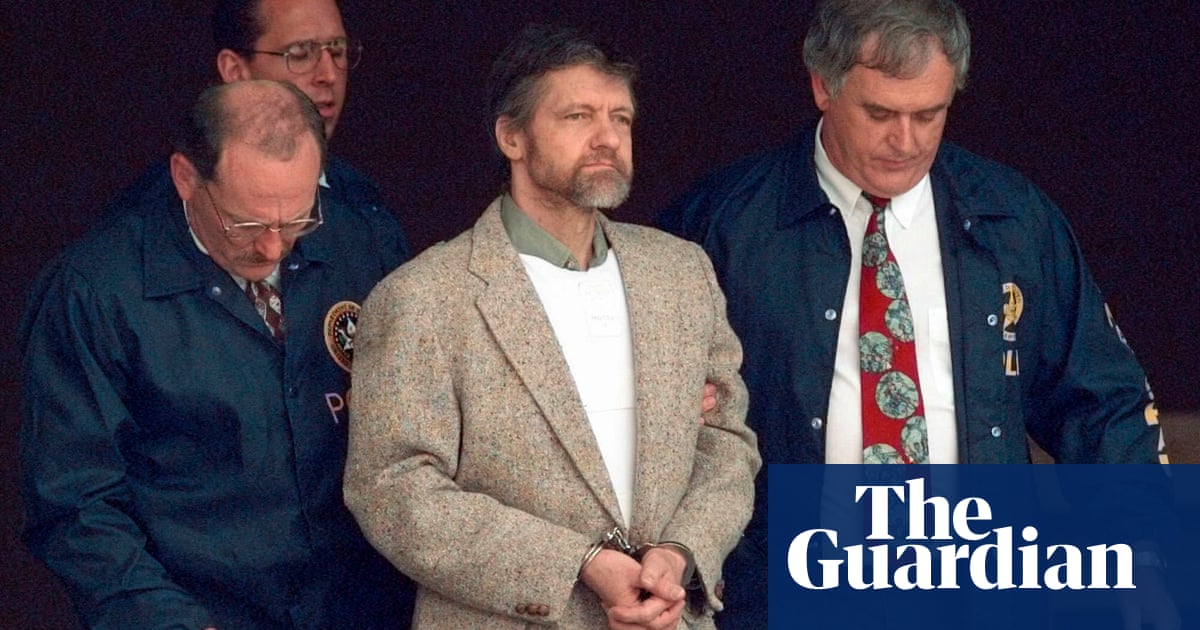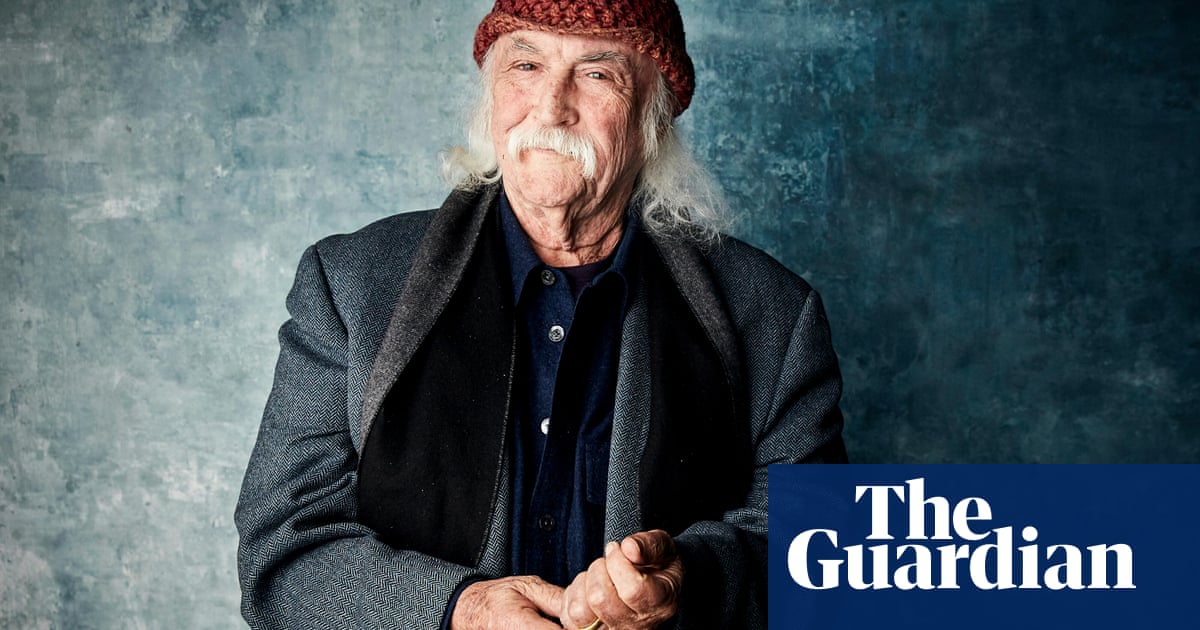
Theodore “Ted” Kaczynski, the Harvard-educated mathematician who retreated to a dingy shack in the Montana wilderness and ran a 17-year bombing campaign that killed three people and injured 23 others, died on Saturday. He was 81.
Branded the “Unabomber” by the FBI, Kaczynski died at the federal prison medical center in Butner, North Carolina, Kristie Breshears, a spokesperson for the federal Bureau of Prisons, told the Associated Press. He was found unresponsive in his cell early on Saturday morning and was pronounced dead around 8am, she said. A cause of death was not immediately known.
Before his transfer to the prison medical facility, he had been held in the federal Supermax prison in Florence, Colorado, since May 1998, when he was sentenced to four life sentences plus 30 years for a campaign of terror that set universities nationwide on edge. He admitted committing 16 bombings from 1978 and 1995, permanently maiming several of his victims.
Years before the September 11 attacks and the anthrax mailing, the Unabomber’s deadly homemade bombs changed the way Americans mailed packages and boarded airplanes, even virtually shutting down air travel on the west coast in July 1995.
He forced the Washington Post, in conjunction with the New York Times, to make the agonizing decision in September 1995 to publish his 35,000-word manifesto, Industrial Society and Its Future, which claimed modern society and technology was leading to a sense of powerlessness and alienation.
“The Industrial Revolution and its consequences have been a disaster for the human race,” the first line read.
It was reviewed by mainstream publications, with the New York Times’ environmental writer Kirkpatrick Sale venturing that the Unabomber “is a rational man and his principal beliefs are, if hardly mainstream, entirely reasonable”.
But it led to his undoing. Kaczynski’s brother David and David’s wife, Linda Patrik, recognized the treatise’s tone and tipped off the FBI, which had been searching for the “Unabomber” for years in nation’s longest, costliest manhunt.
Authorities in April 1996 found him in a 10-by-14ft (3-by-4-meter) plywood and tarpaper cabin outside Lincoln, Montana, that was filled with journals, a coded diary, explosive ingredients and two completed bombs.
But Kaczynski, who was initially regarded by some as a radical environmentalist, was primarily an anti-technologist. Academics judged his “manifesto” as a synthesis of the work of others: the French philosopher Jacques Ellul, British zoologist Desmond Morris and American psychologist Martin Seligman.
But once revealed as a wild-eyed hermit with long hair and beard who weathered Montana winters in a one-room shack, Kaczynski struck many as more of a pathetic loner than romantic antihero.
Even in his own journals, Kaczynski came across as not a committed revolutionary, but a vengeful hermit driven by petty grievances.
“I certainly don’t claim to be an altruist or to be acting for the ‘good’ (whatever that is) of the human race,” he wrote on 6 April 1971. “I act merely from a desire for revenge.”
Kaczynski hated the idea of being viewed as mentally ill and when his lawyers attempted to present an insanity defense, he tried to fire them. When that failed, he tried to hang himself with his underwear.
Kaczynski eventually pleaded guilty rather than let his defense team proceed with an insanity defense.
“I’m confident that I’m sane,” Kaczynski told Time magazine in 1999. “I don’t get delusions and so forth.”
Ted Kaczynski was born on 22 May 1942, in Chicago, the son of second-generation Polish Catholics – a sausage-maker and a homemaker. He played the trombone in the school band, collected coins and skipped the sixth and 11th grades.
Kaczynski had skipped two grades to attend Harvard at age 16 and had published papers in prestigious mathematics journals. His explosives were carefully tested and came in meticulously handcrafted wooden boxes sanded to remove possible fingerprints. Later bombs bore the signature “FC” for “Freedom Club”.
The FBI called him the “Unabomber” because his early targets seemed to be universities and airlines. An altitude-triggered bomb he mailed in 1979 went off as planned onboard an American Airlines flight; a dozen people onboard suffered from smoke inhalation.
Kaczynski killed computer rental store owner Hugh Scrutton, advertising executive Thomas Mosser and timber industry lobbyist Gilbert Murray. California geneticist Charles Epstein and Yale University computer expert David Gelernter were maimed by bombs two days apart in June 1993.
Mosser was killed in his North Caldwell, New Jersey, home on 10 December 1994, a day he was supposed to be picking out a Christmas tree with his family. His wife, Susan, found him grievously wounded by a barrage of razor blades, pipes and nails.
“He was moaning very softly,” she said at Kaczynski’s 1998 sentencing. “The fingers on his right hand were dangling. I held his left hand. I told him help was coming. I told him I loved him.”
When Kaczynski stepped up his bombs and letters to newspapers and scientists in 1995, experts speculated the “Unabomber” was jealous of the attention being paid to the Oklahoma City bomber Timothy McVeigh.
A threat to blow up a plane out of Los Angeles before the end of the Fourth of July weekend threw air travel and mail delivery into chaos. The Unabomber later claimed it was a “prank”.
The Washington Post printed the Unabomber’s manifesto at the urging of federal authorities, after the bomber said he would desist from terrorism if a national publication published his treatise.
Patrik had had a disturbing feeling about her brother-in-law even before seeing the manifesto and eventually persuaded her husband to read a copy at the library. After two months of arguments, they took some of Ted Kaczynski’s letters to Patrik’s childhood friend Susan Swanson, a private investigator in Chicago.
Swanson in turn passed them along to former FBI behavior science expert Clint Van Zandt, whose analysts said whoever wrote them had also probably written the Unabomber’s manifesto.
“It was a nightmare,” David Kaczynski, who as a child had idolized his older brother, said in a 2005 speech at Bennington College. “I was literally thinking, ‘My brother’s a serial killer, the most wanted man in America.’”
Swanson turned to a corporate lawyer friend, Anthony Bisceglie, who contacted the FBI.
David Kaczynski wanted his role kept confidential, but his identity quickly leaked out and Ted Kaczynski vowed never to forgive his younger sibling. He ignored his letters, turned his back on him at court hearings and described David Kaczynski in a 1999 book draft as a “Judas Iscariot [who] ... doesn’t even have enough courage to go hang himself.”












